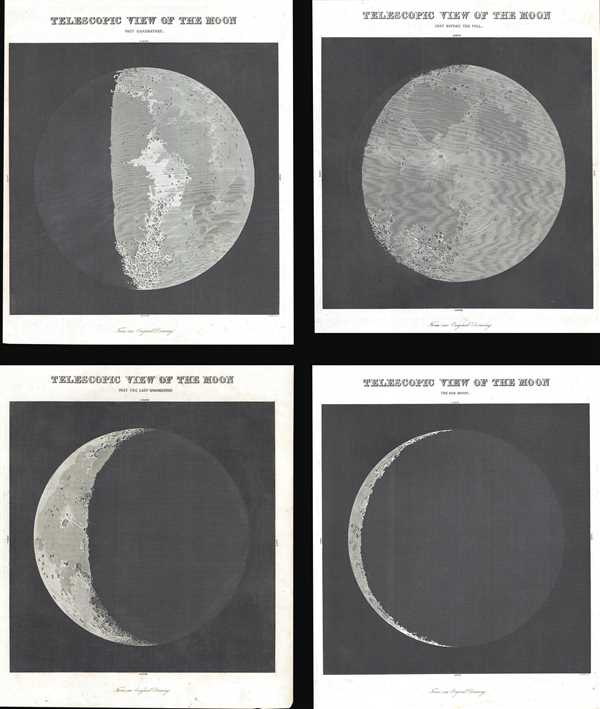1845 Bradford Views of the Moon
MoonViews-bradford-1845
Title
1845 (undated) 11.5 x 9.75 in (29.21 x 24.765 cm)
Description
These views were engraved by John Wykeham Archer and published in Duncan Bradford's The Wonders of the Heavens… in 1845.
Cartographer
John Wykeham Archer (1808 - May 25, 1864) was a British writer, artist, and engraver. Born in Newcastle-upon-Tyne, in 1820 Bradford moved to London where he studied with John Scott, a noted engraver of animals. Scott, however, fell ill, which forced Bradford's apprenticeship to be cut short and he decided to return to Newcastle. While in Newcastle, Bradford collaborated with William Collard on a series of large plates of Fountains Abbey based on drawings by John Wilson Carmichael. Bradford also produced several plates on his own for Mackenzie's History of Durham. After a short time in Edinburgh, Bradford returned to London in 1830 and entered the studio of the engravers William and Edward Finden. After a few years, however, the market for the kind of work done by the Findens declined, and Bradford found work engraving plates for the New Sporting Magazine. At some point Bradford was elected as a member of the New Society of Painters in Water Colours, he began creating work in this vein, including a series of drawings of St. Mary Overy, before its restoration. Soon, Bradford had amassed a more than one hundred drawings of London antiquities and offered them to the British Museum, which declined the collection. Nonetheless, he successfully sold them to William Twopenny, who also commissioned Bradford to continue making twenty more similar drawings each year. The British Museum then acquired the entire collection from Twopenny's estate in 1874. Archer also created drawings for wood engravings that were published in the Illustrated London News and several other publications. He was also a regular contributor to the Gentleman's Magazine. Bradford also claimed that he had revived the practice of engraving monumental brasses, and even produced several monuments of this type from his own designs. He also painted a few works in oil over the course of his career. More by this mapmaker...

